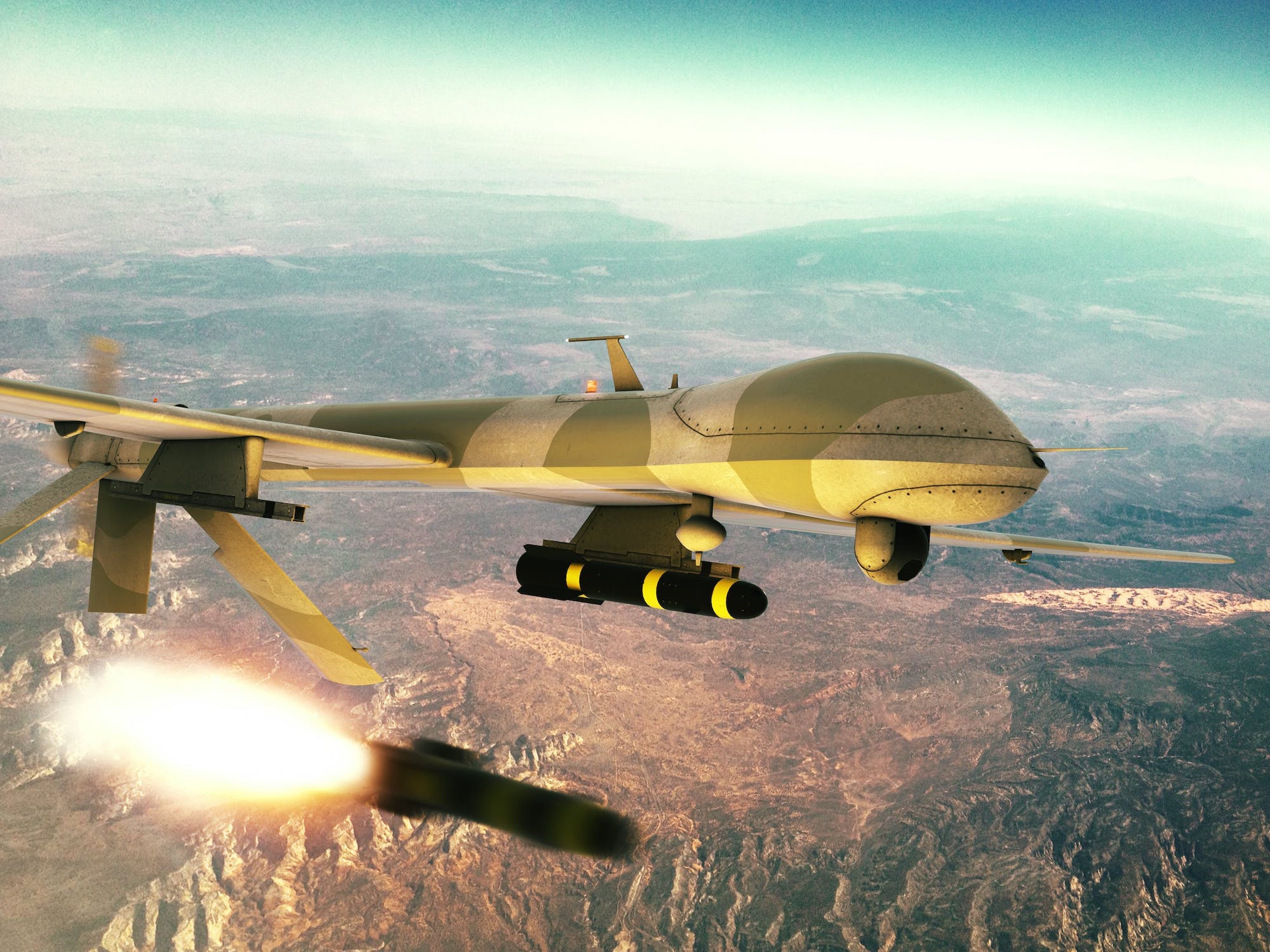
General Atomics iconic MQ-9 Reaper drone will soon sport even better sensors.
The U.S. Department of Defense (DOD) has awarded General Atomics Aeronautical Systems (GA-ASI) a $93.3 million contract to make better sensors for some of DOD’s most important Unmanned Aerial Vehicles, including the company’s famed MQ-9 Reaper. The contract addresses a critical dimension of DoD’s mandate to lead the world in airborne artificial intelligence (AI).
The effort is being run by DOD’s Joint Artificial Intelligence Center (JAIC) under its Smart Sensor Project (SSP). Unlike other DOD research and development agencies—such as the Defense Advanced Research Project Agency (DARPA), which supports work on conceptual technologies—JAIC’s mission is to find the best available AI from industry and academia and accelerate its adoption and integration throughout the military. SSP’s goals are to advance AI technology by demonstrating object recognition algorithms for UAVs and employing onboard AI to control the aircraft’s sensors and flight.
GA-ASI and JAIC have invested heavily in deploying autonomous sensor technologies to give DOD’s UAV fleet situational awareness dominance. The quest to maintain this transformative advantage, which has pitted DOD’s army of AI coders against programmers from enemy states, will figure prominently in defining the military’s future.
“As we look to a future of ‘informatized warfare’ comprising algorithm against algorithm and widespread use of autonomous systems, we need to design operating concepts that harness AI, 5G, enterprise cloud and, eventually, quantum,” blogged Air Force Lt. Gen. John N.T, director of JAIC’s Office of the Department of Defense Chief Information Officer. “This critical path from a hardware-centric to an all-domain digital force will shape the department for decades to come.”
GA-ASI will deploy the new technology on the MQ-9 configured with multiple sensors, including GA-ASI’s Reaper Defense Electronic Support System (RDESS) and Lynx Synthetic Aperture Radar (SAR). Lynx is a powerful, multimode radar with impressive Size, Weight, and Power (SWAP) specs that can capture high-resolution, photographic-quality imagery through clouds, rain, dust, smoke and fog. Its search modes provide the wide-area coverage for any integrated sensor suite, allowing for cross-cue to a narrow Field-of-View (FOV) Electro-optical/Infrared (EO/IR) sensor.
Commanding the MQ-9 will be Metis, the company’s Intelligence, Surveillance and Reconnaissance (ISR) tasking and intelligence-sharing application. Metis enables operators to specify effects-based mission objectives and receive automatic notification of actionable intelligence.
“GA-ASI is excited to leverage the considerable investment we have made to advance the JAIC’s autonomous sensing objective,” said GA-ASI Vice President of Strategic Development J.R. Reid. “This will bring a tremendous increase in unmanned systems capabilities for applications across the full-range of military operations.”
DOD is also investing in developing senior-ranking officers/pilots who can operate the new AI sensor technology in the MQ-9. GA-ASI pilots have operated MQ-9s for the Marine Corps in the past, but a shift came in March, when members of Marine UAV Squadron 1 independently carried out a Reaper flight over an undisclosed location in the Middle East. Marine pilots and sensor operators operated the aircraft from Yuma, Arizona.
In October, the Marine Corps established a new Military Occupational Specialty (MOS) for officers from second lieutenant to lieutenant colonel. They will advise commanders on employment of Group 5 UAV systems, including the MQ-9 Reaper. While the service already has an enlisted unmanned aircraft system operator MOS, the move to create an officer career path for MQ-9s emphasizes DOD’s planned investment in the iconic UAV
MQ9 Reaper photo credit: Tayeb Mezahdia/Pexels






